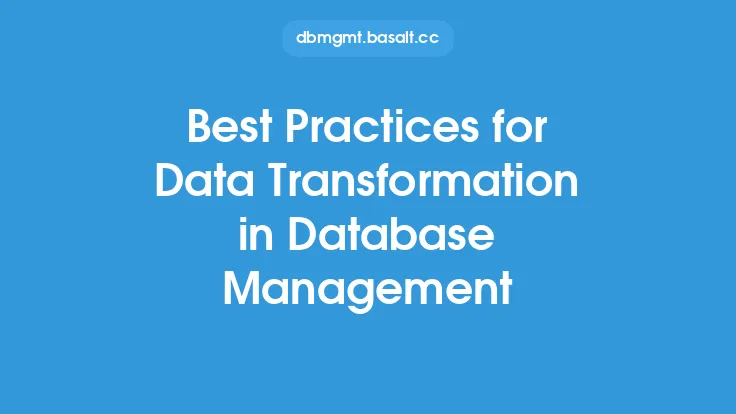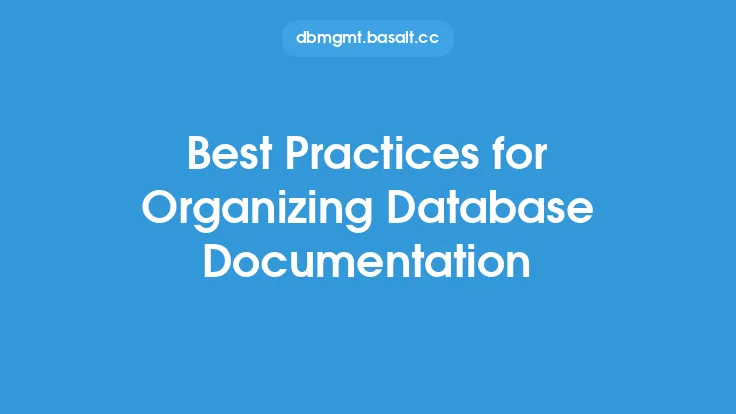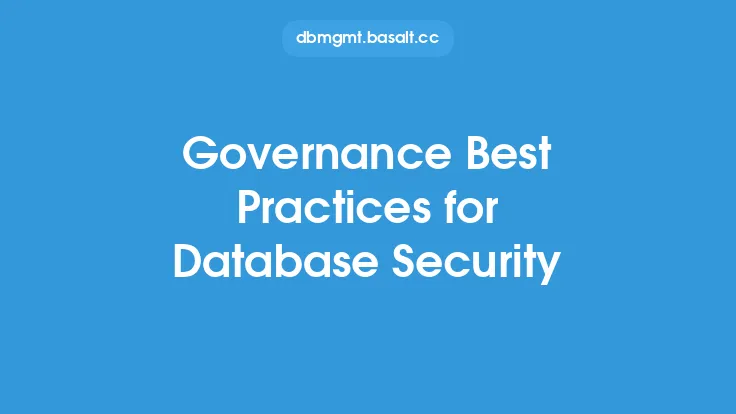Database security is a critical aspect of protecting sensitive information, and authorization plays a vital role in ensuring that only authorized users have access to the data. Database authorization is the process of granting or denying access to database resources based on user identity, role, or privileges. In this article, we will discuss the best practices for database authorization to ensure secure data access.
Introduction to Database Authorization
Database authorization is a mechanism that controls access to database objects, such as tables, views, and stored procedures. It ensures that users can only perform actions that they are authorized to do, preventing unauthorized access, modification, or deletion of data. Database authorization involves creating and managing user accounts, roles, and privileges, as well as auditing and monitoring user activity.
Principles of Database Authorization
There are several principles that guide database authorization, including:
- Least Privilege Principle: This principle states that users should only have the privileges necessary to perform their tasks, and no more. This reduces the risk of unauthorized access or data breaches.
- Separation of Duties: This principle involves dividing tasks and privileges among multiple users or roles, to prevent any one user from having too much power or control.
- Audit and Monitoring: Regular auditing and monitoring of user activity helps to detect and prevent unauthorized access or malicious activity.
Database Authorization Models
There are several database authorization models, including:
- Discretionary Access Control (DAC): This model grants access to database objects based on user identity or role.
- Mandatory Access Control (MAC): This model grants access to database objects based on a set of rules and policies.
- Role-Based Access Control (RBAC): This model grants access to database objects based on user role or privileges.
Best Practices for Database Authorization
To ensure secure data access, follow these best practices for database authorization:
- Use Strong Passwords: Require strong passwords for all user accounts, and consider implementing multi-factor authentication.
- Use Roles and Privileges: Use roles and privileges to grant access to database objects, rather than relying on user identity.
- Limit Privileges: Limit privileges to the minimum necessary for each user or role, to prevent unauthorized access or data breaches.
- Regularly Review and Update Privileges: Regularly review and update privileges to ensure that they are still necessary and appropriate.
- Use Auditing and Monitoring: Use auditing and monitoring to detect and prevent unauthorized access or malicious activity.
- Implement Separation of Duties: Implement separation of duties to prevent any one user from having too much power or control.
Implementing Database Authorization
To implement database authorization, follow these steps:
- Create User Accounts: Create user accounts for all users who need access to the database.
- Assign Roles and Privileges: Assign roles and privileges to each user account, based on their needs and responsibilities.
- Create Database Objects: Create database objects, such as tables, views, and stored procedures.
- Grant Access: Grant access to database objects based on user role or privileges.
- Regularly Review and Update: Regularly review and update user accounts, roles, and privileges to ensure that they are still necessary and appropriate.
Common Database Authorization Mistakes
There are several common mistakes that can compromise database authorization, including:
- Overly Permissive Privileges: Granting too many privileges to users or roles, increasing the risk of unauthorized access or data breaches.
- Weak Passwords: Using weak passwords or not requiring passwords at all, making it easy for unauthorized users to gain access.
- Lack of Auditing and Monitoring: Not regularly auditing and monitoring user activity, making it difficult to detect and prevent unauthorized access or malicious activity.
- Not Implementing Separation of Duties: Not implementing separation of duties, allowing any one user to have too much power or control.
Conclusion
Database authorization is a critical aspect of database security, and following best practices is essential to ensure secure data access. By understanding the principles of database authorization, using the right authorization model, and implementing best practices, you can protect your database from unauthorized access and data breaches. Remember to regularly review and update user accounts, roles, and privileges, and to use auditing and monitoring to detect and prevent malicious activity. By taking these steps, you can ensure the security and integrity of your database.





